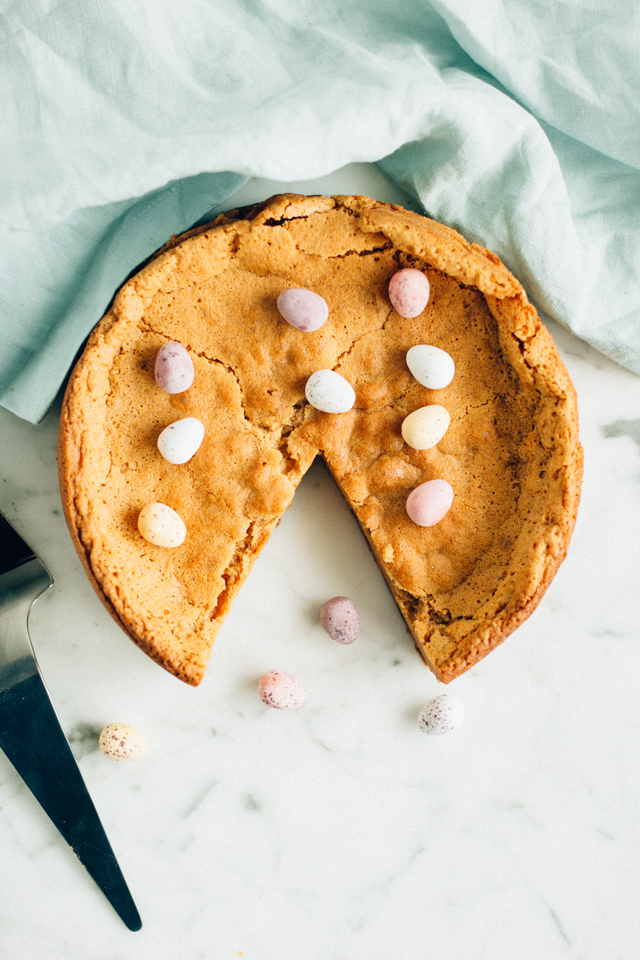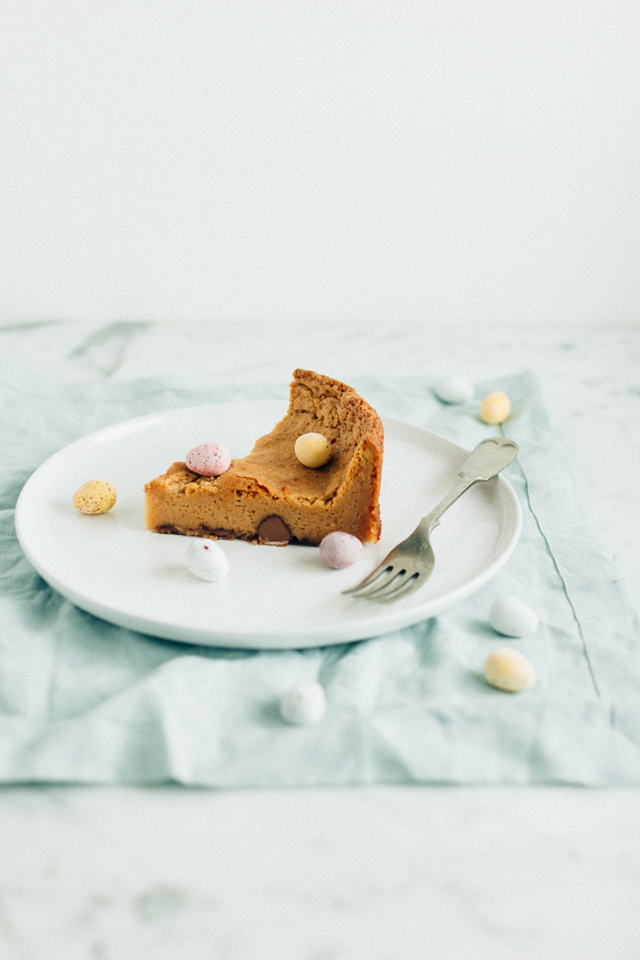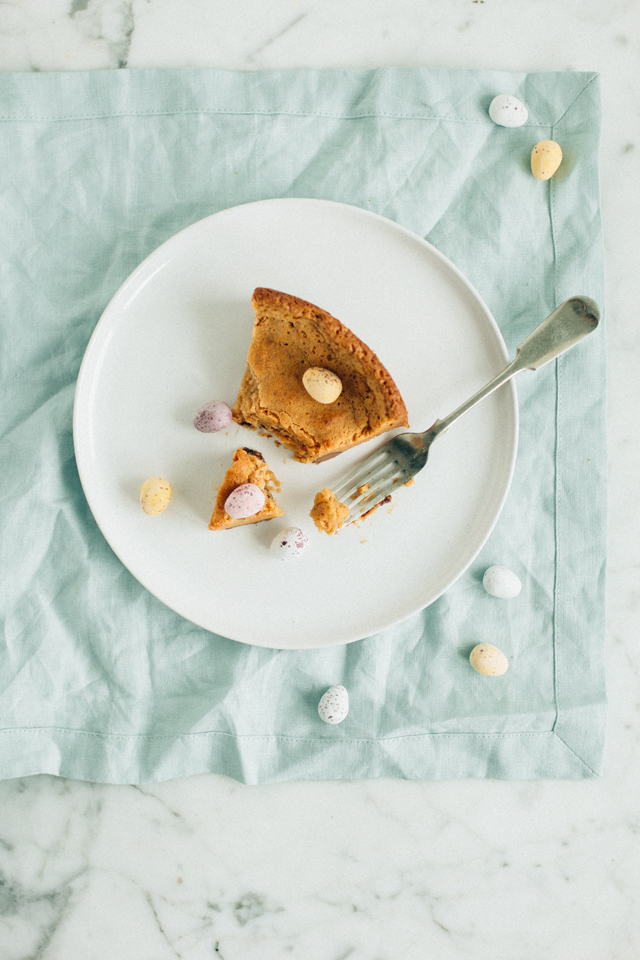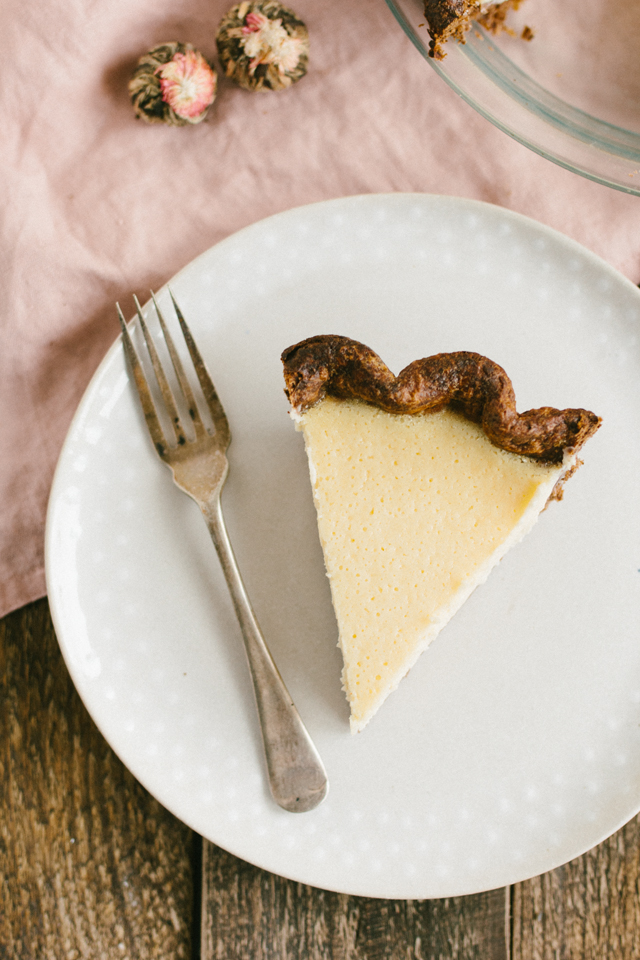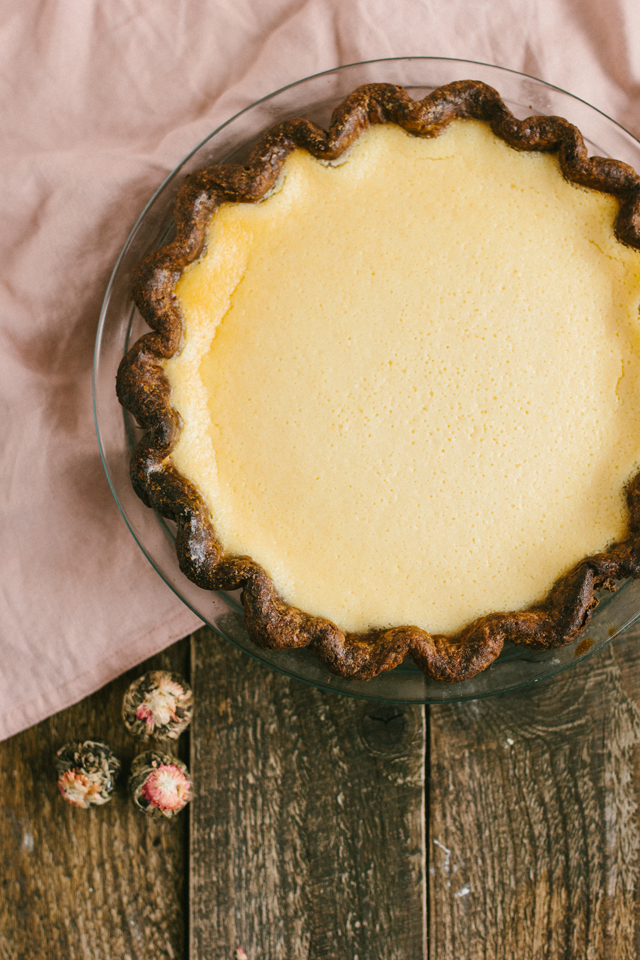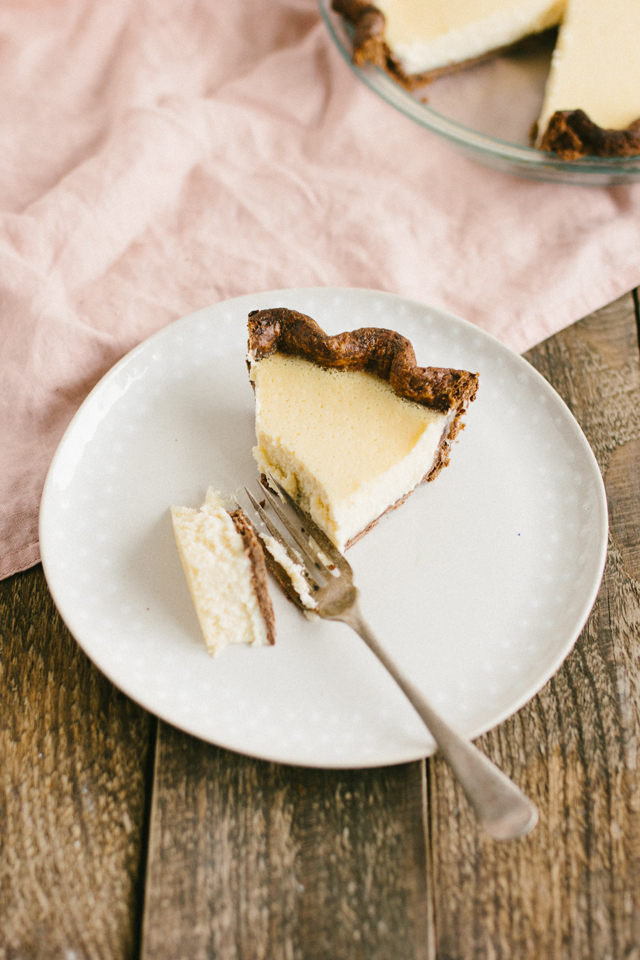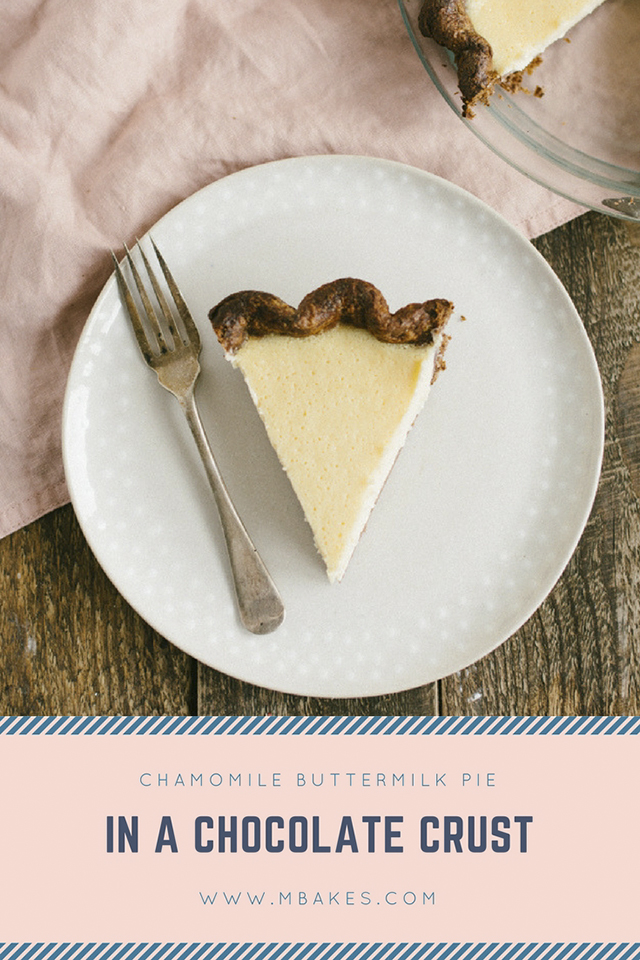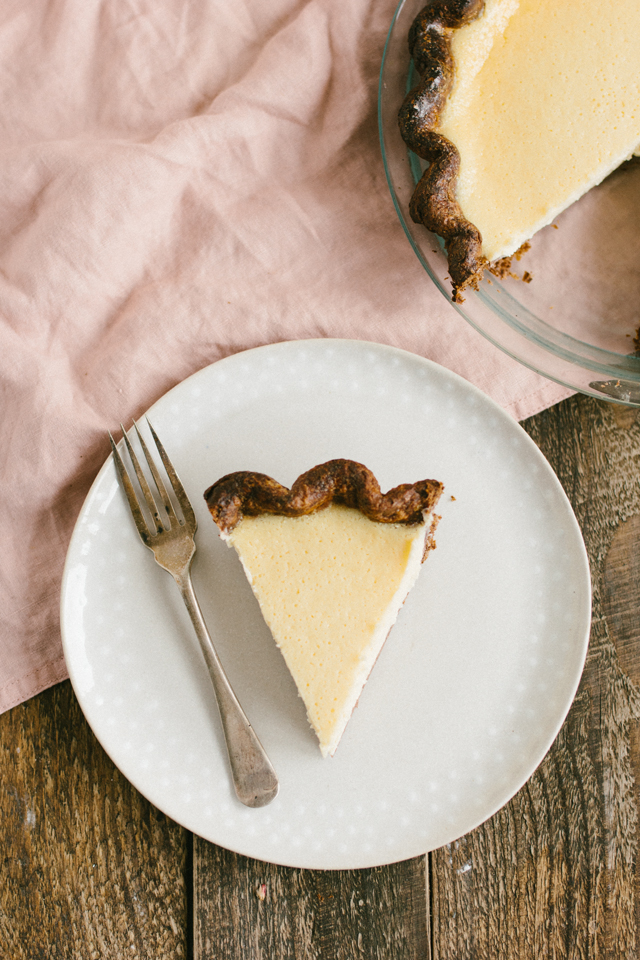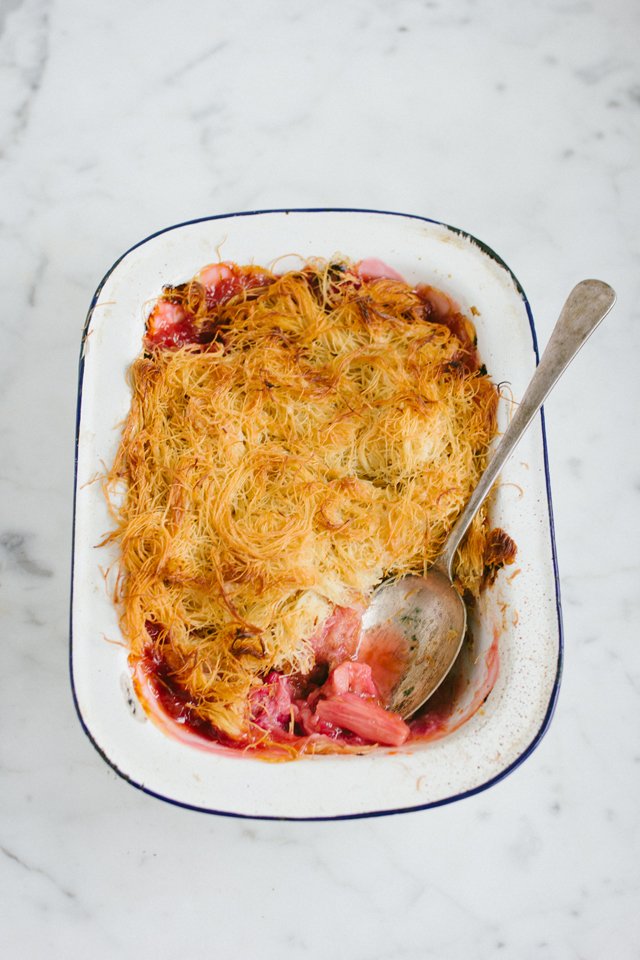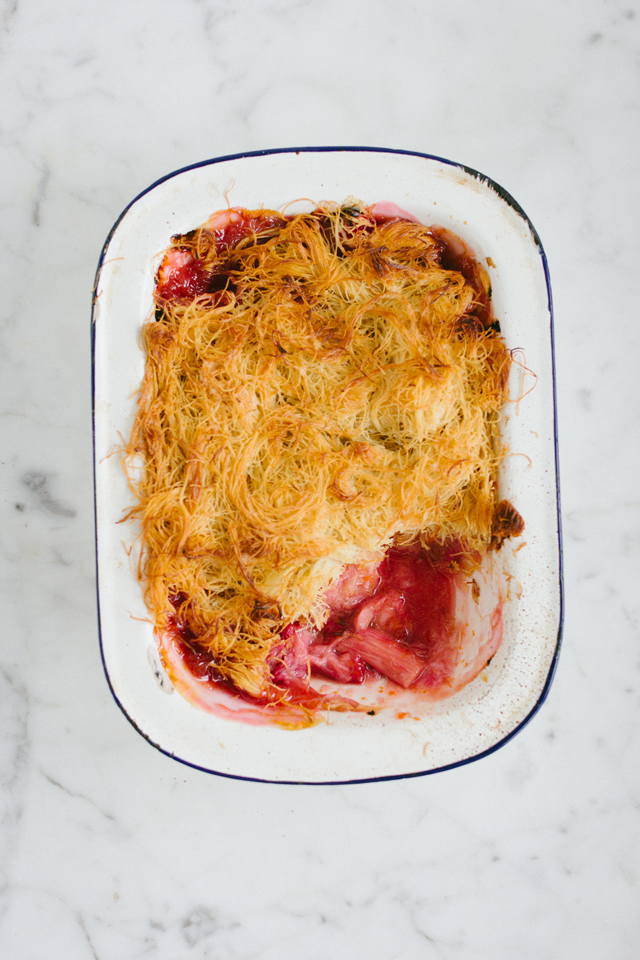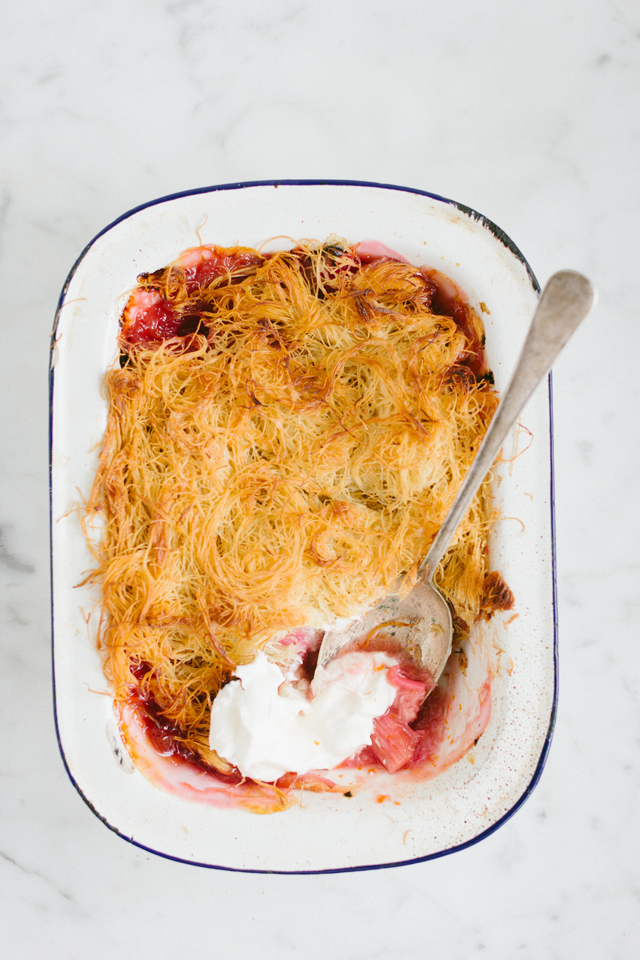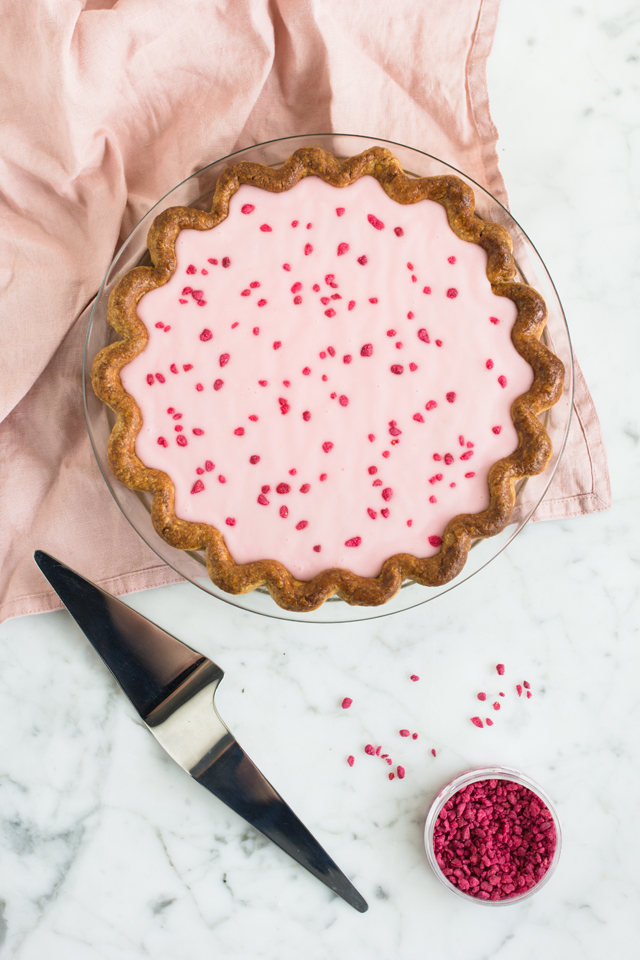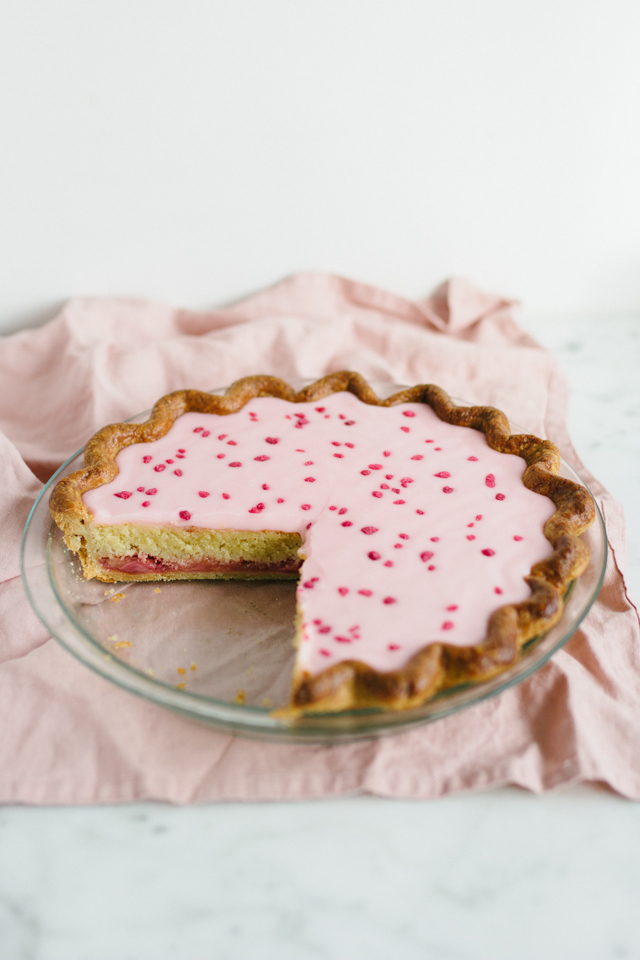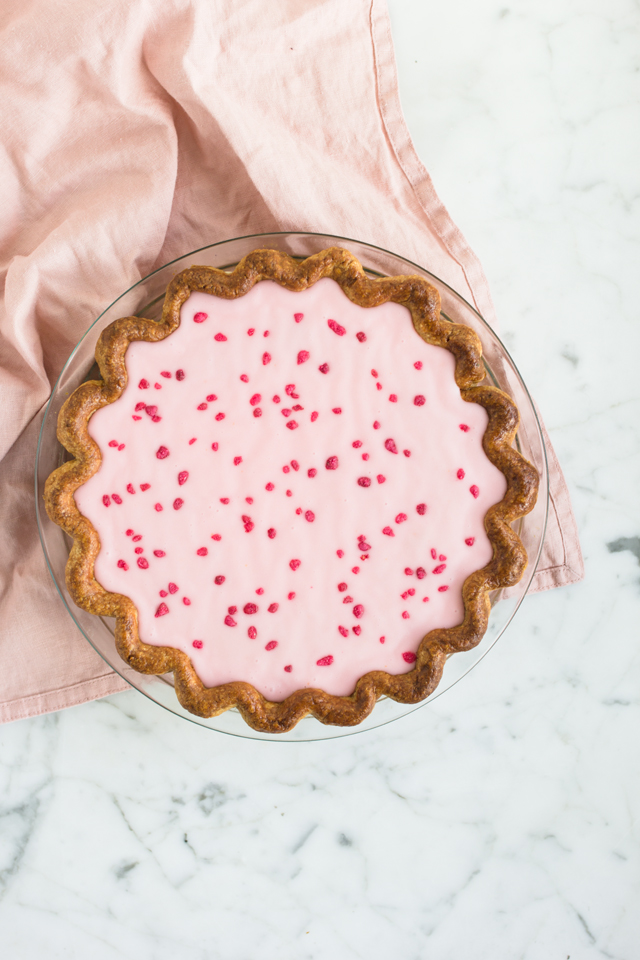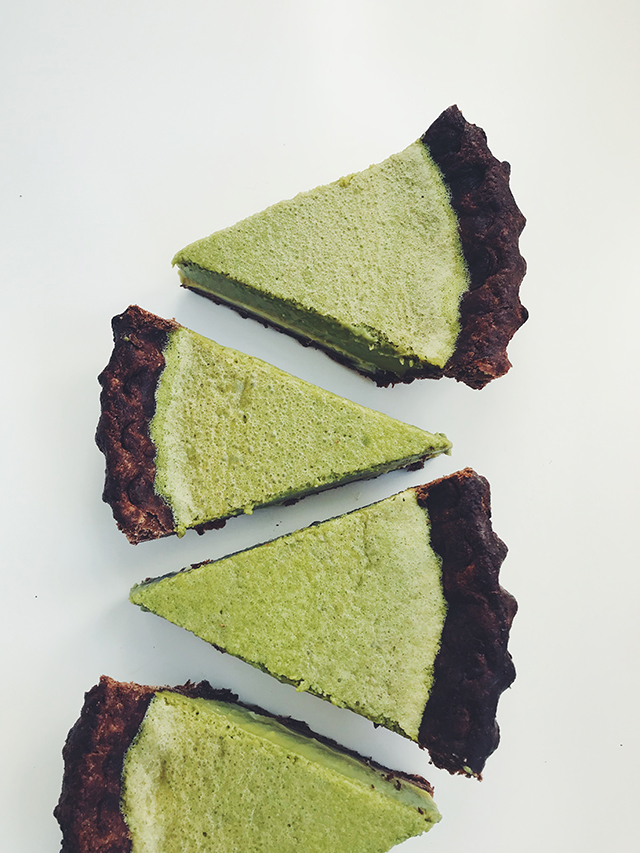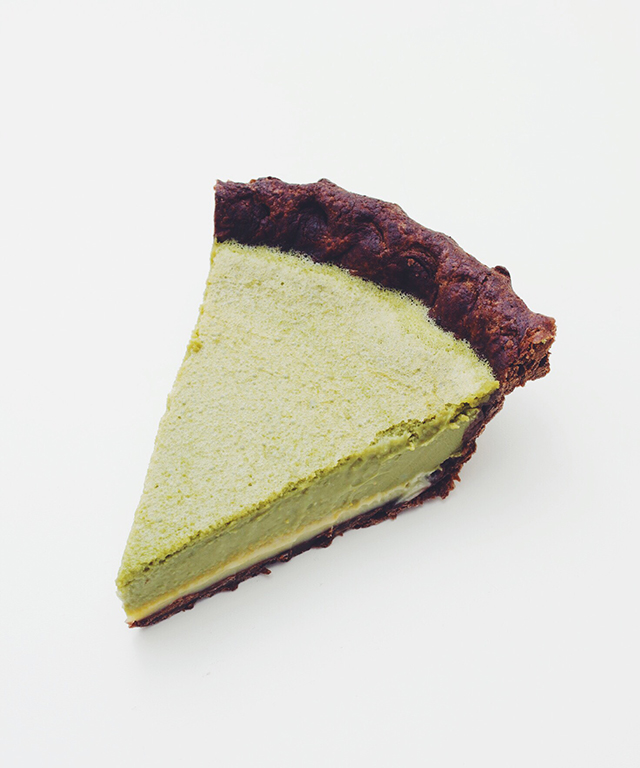My contribution to Easter: taking a recipe that really really doesn’t need to be any sweeter, and adding Mini Eggs to it. It sounds gross, but most of what baking is is layering sweet things on top of each other. You’re supposed to introduce a savoury element, reduce the sugar where appropriate, balance the flavours (salt, acid etc.) in your baking to make sure the end product isn’t cloyingly sweet. Instead, I thought about the flourless dark chocolate cake and I wondered whether it would work with white chocolate and Mini Eggs. The result has the texture of a blondie, just a little bit gooier because of the lack of flour. You still get a crackly top - I always feel disappointed when I see a brownie/blondie without one so this was definitely a win-win situation.
The cake would have been too sweet if I
didn’t caramelise the chocolate for an hour and a half, even if sticking your
head in a hot oven every ten minutes to stir chocolate feels a bit Sylvia Plath
- caramelising the chocolate is necessary, especially if you’re going to add
crushed up bits of chocolate that contain an indecent amount of palm oil and E
numbers. If you can’t be bothered to caramelise the white chocolate and can’t
justify buying a 2.5kg bag of it (smaller quantities yet to be seen), you could
fold through crushed raspberries. Or save yourself the hassle, use dark
chocolate, leave out the Mini Eggs and serve with a dollop with crème fraiche -
it doesn’t get much more sophisticated than a flourless chocolate cake, and it would
make the ultimate dinner party dessert.
Platimun Sponsor:
Jungle Scout
Jungle Scout works as a full-fledged Amazon research tool by bringing you complete information about a product. You can conveniently audit and analyze various product pages to check their strategies. It will break down the complex data into easy-to-understand terms.
Readers of mbakes can now get an Exclusive Jungle Scot 50% Coupon Code
- 150g unsalted butter
- 180g white chocolate, chopped
- ½ tsp salt
- 4 eggs, seperated
- 125g caster sugar
- 2 packets mini eggs (180g each), mostly crushed, some whole
Special equipment: 23cm loose bottomed cake tin
Method
Method
- To caramelise the white chocolate, preheat the oven to 140C/120 Fan and place the chopped chocolate in a ceramic baking dish. Roast the white chocolate for 1 - 1 ½ hours, stirring every 10 minutes until it is a deep golden colour.
- To make the cake, increase the oven temperature to 170C/150 Fan and butter the cake in.
- Melt the butter and chocolate in a large bowl over a pan of gently simmering water. Once melted, set aside to cool slightly.
- Put the egg yolks in the bowl of a freestanding mixer along with roughly half the sugar. Using the whisk attachment, whisk on high speed until the mixture is pale and doubled in volume.
- Add the egg yolk mixture and crushed mini eggs to the chocolate mixture and fold through. Be careful not to over mix.
- Use the same, ultra clean mixing bowl to whisk the egg whites and remaining sugar until soft (but not stiff) peaks form.
- Fold the egg whites into the egg yolk mixture, then pour into the cake tin. Bake 35-40 minutes, there should still be a slight wobble in the centre. Serve warm, and decorate with the rest of the whole mini eggs.






